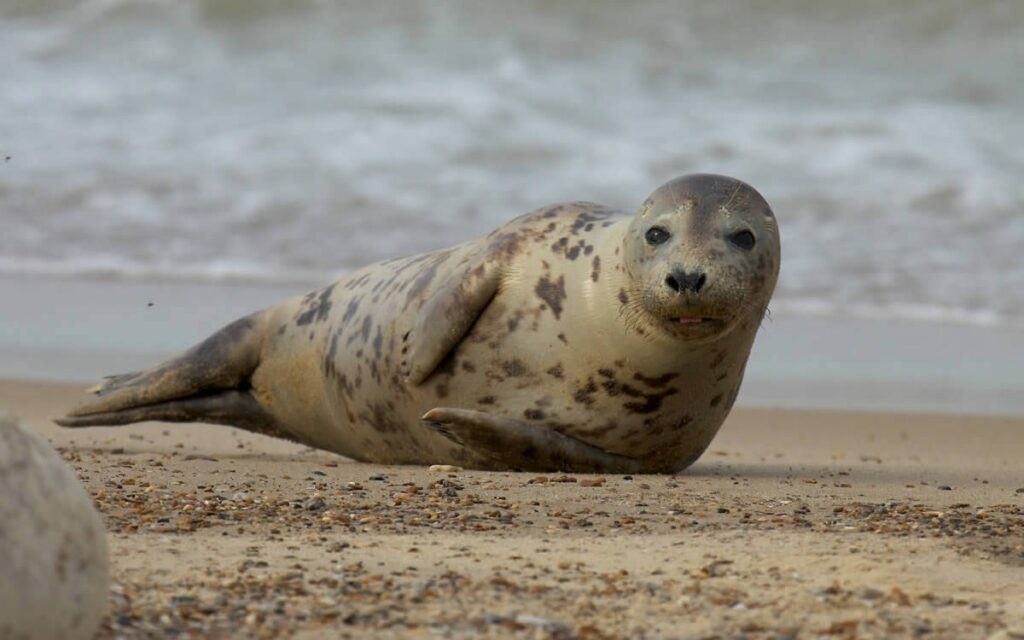Grey seal
The grey seal (Halichoerus grypus) is found on both shores of the North Atlantic Ocean. It is a large seal of the family Phocidae, which are commonly referred to as "true seals" or "earless seals".

Grey Seal
- Latin name: Halichoerus grypus
- Other common name: Atlantic grey seal
- Distinctive features: Dark brown to grey or black with blotches. Bulls have dark pelts, broad shoulders, an elongated snout, and a heavy muzzle. Cows have paler pelts, thinner snout, and a less rounded profile.
- Size: Bulls reach 2.3 m and 350 kg; cows are usually 1.6 to 2.0 m long and 200 kg. Pups weigh about 15 kg at birth.
- Longevity: 20+ years (bulls); 30+ years (cows)
- Diet: Primarily fish, taken at depths of 70 m or more, including cod, haddock, pollock, white hake, flatfish, herring, skate, as well as octopus and lobster. The interaction of grey seals and cod in the St. Lawrence is being extensively studied due to the impact of seal predation and parasites.
- Predators: Killer whales and sharks.
- Population: Abundant, has risen steadily since the 1980s. The total estimated grey seal population size is an estimated 505,000 animals (2014).
- IUCN Status: Least concern; population status: increasing.
- COSEWIC Status: Not at risk.
Range
Grey seals are found on both sides of the North Atlantic Ocean, with population centres in Canada, the British Isles, and the Baltic Sea. Populations in all three centres are increasing.
About 40% of the world population inhabits the British Isles, where their numbers have doubled since records began in the 1960s. In Canada they are found in the Gulf of St. Lawrence off the shores of Quebec, New Brunswick, Prince Edward Island, Nova Scotia, and Newfoundland.
Life Cycle
Bulls begin to breed at about age 10, and cows at 5. Grey seals breed on exposed rocky shores. Cows arrive at breeding sites first and give birth to a single pup. Pups are born in autumn (September to November) in the eastern Atlantic and in winter (January to February) in the western Atlantic. When the bulls come ashore they compete for space nearest to the cows, and the oldest bulls get the best positions.
The gestation period for grey seals is 11.5 months, including a three-month delay in the implantation of the fertilized egg (to ensure birth coincides with the flow of ice). After two to three weeks of nursing the pup, the cow mates again, then leaves the rookery. Pups are born with silky white fur. This is shed within a month and replaced by dense waterproof adult fur. Soon after they leave for the sea to fish for themselves.